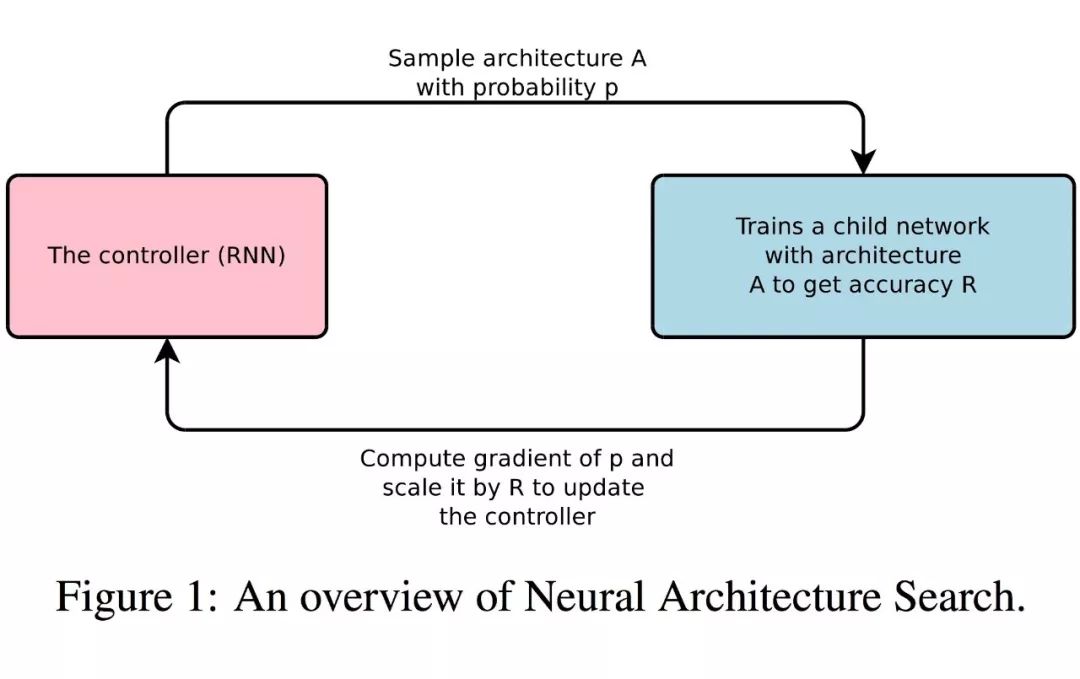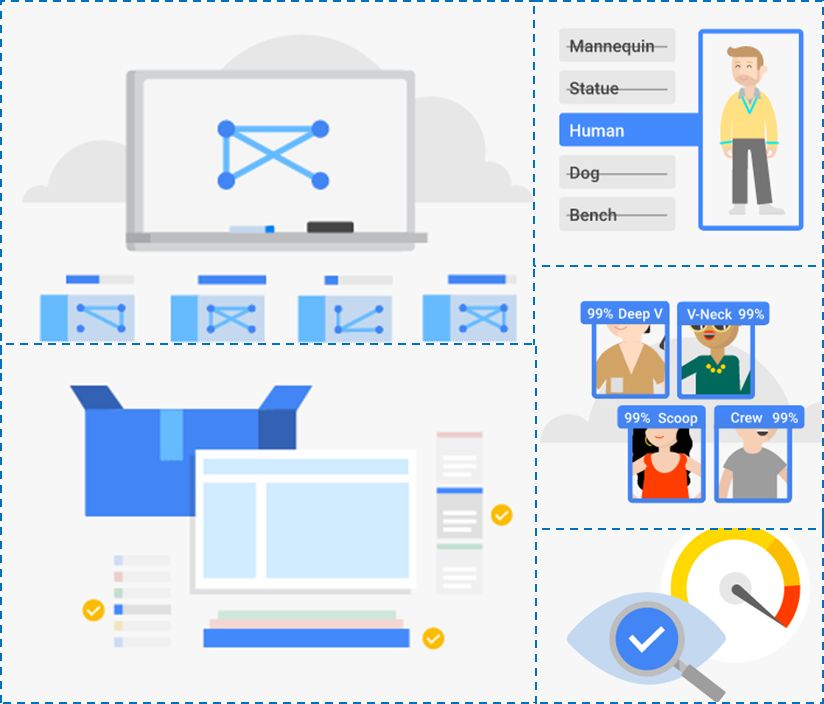Google AutoML is a machine learning cloud software toolkit developed based on Google's latest research in the field of image recognition, Neural Architecture Search (NAS). As an algorithm, NAS looks for the most suitable neural network to perform a specific task on the data set given a specific data set. AutoML is a set of machine learning tools that can easily train high-performance deep networks without requiring the user to master any deep learning or artificial intelligence knowledge. All you have to do is just tag your data. Google will use NAS to find the best neural network for your specific datasets and tasks. This approach outperforms human manual design of neural networks. It has a machine learning model that can be personalized. What the user needs to do is provide the data you need to train. The whole process under the graphical interface is very easy to use, completely changing the complex research process in the past. At the same time all machine learning techniques are state-of-the-art, and you can train advanced algorithms here using the best technology. AutoML has completely changed the game rules of the entire machine learning. In the face of many application programs, APP no longer requires specialized skills and knowledge. Many companies only need to choose the right depth network for simpler tasks such as image classification, speech recognition, and text processing. By then, they no longer need to hire five machine-learning Ph.Ds. Instead, they hire a person who can manipulate the mouse and organize the data. At present, only a few companies have the ability to research and deploy machine learning and artificial intelligence services. Only a limited number of people can create advanced machine learning models. Even a company that has begun to become involved in artificial intelligence still needs a lot of effort to establish complex customized machine learning needs with time-critical processes. Although there are many APIs on the market that include pre-processing models, there is still a long way to go to bring AI to everyone. However, AutoML has made up for the shortage of artificial intelligence applications and technical limitations, and has enabled more companies to make better use of AI and benefit from it. It can help companies with limited experience to use their data to build customized models using the most advanced machine learning techniques. This technology not only increases the productivity of machine learning experts, but also helps inexperienced engineers build the powerful AI systems they dream of. There is no doubt that the way companies use "artificial intelligence" will change dramatically. But how did it change? Who is this change for? What will happen to people who are deep in machine learning? This article will analyze in detail the changes brought about by Google's AutoML and software 2.0, and what it means for companies and developers in machine learning. The faster AutoML develops, the less research and development companies need to invest in Many companies in the field of artificial intelligence, especially startups, are doing relatively simple things in the context of deep learning. Most of the value of these companies comes from the products that they eventually assembled. For example, most computer vision startups are using some kind of image classification network, which will actually be AutoML's first entry-level tool in the toolkit. In fact, as the most advanced image classification network, Google’s NASNet has already disclosed the code in TensorFlow. Now, companies can skip the complex experimental research steps in the product development process by simply transferring learning neural networks to accomplish the goals and tasks they set. As experimental research is reduced, more business resources can be used for product design, development, and important data processing. Here, we have to look at the product below. Product experience becomes more important As more time is spent on product design and development, the company will speed up product replacement. The company's main value will be more reflected in how useful their products or technologies are. Is the product designed well enough? Is it easy to use? Is the way the data flow is set up to quickly and easily improve the model? These new issues will be the key to the company's optimization of its products and its ability to update products faster than the competition. Cutting-edge research will no longer be the main driving force for improving technical performance. The main driving force has become data and resources. Data and resources have become vital If research becomes a less important part of the company, how does a company stand out? How to stand out from the competition? Of course, sales, marketing, and the product design we just discussed are all very important, but the driving factors for the performance of these deep learning technologies are data and resources. The cleaner and more diversified the data (for both quality and quantity) for the mission-specific data, the more it can use software tools such as AutoML to improve the model. This means that acquiring and processing data requires a lot of resources. All of this partly indicates that we are moving away from the tedious life of writing a lot of code. Software 2.0: Deep Learning Becomes Another Tool in Most People's Toolbox With Google AutoML, all you have to do is upload already-tagged data so everything is ready! For those who do not have a deep understanding of the field and who do not have deep requirements, they just want to leverage the leveraging power of this technology to inspire greater results. Application learning for deep learning becomes easier to obtain. Use fewer codes in the toolkit to get more use tools. In fact, for most people, deep learning is just another common tool in the toolbox. Andrej Karpathy wrote a great article on sofeware 2.0 about how hard coders are moving from writing large amounts of code to more product design and tooling, and then let AI do the rest. However, all this requires innovative science and scientific research. There is still important space for innovative science and research Despite these easy-to-use tools, the development process has not ended. Just as when cars were invented, we did not stop continuing to develop them. Even now that they have become very advanced, we are still developing. Artificial intelligence still has plenty of room for improvement. For example, AI is not creative enough, it does not reason, and it cannot handle complex tasks. It requires huge amounts of tagged data, which is time-consuming and costly to acquire. Training still takes a long time to reach the highest precision. The performance of the deep learning model is very good for some simple tasks (such as classification), but it is only acceptable in terms of localization, and sometimes even poor (depending on the complexity of the task). We didn't even understand the deep network from within. All of these provide space for science and research, especially for the current advancement of artificial intelligence technology. In business, some companies, especially tech giants (such as Google, Microsoft, Facebook, Apple, Amazon) need to use science and research to innovate existing tools to compete with other companies. These companies do have access to a lot of data and resources, design great products, conduct large-scale sales and marketing, etc. They can really use these resources to show themselves in this competition, and these competitive advantages are also Can come from cutting-edge innovations. Then leave the last question~ Good or Bad? In general, this transformation of creating artificial intelligence technology is a good thing. Most companies will use existing machine learning tools instead of creating new ones because it is really unnecessary. Artificial intelligence that is close to cutting edge is no longer unattainable to many people, which means that it is a better technology for all people. Artificial intelligence is also a fairly "open" field. For example, an industry like Andrew Ng has created a very popular course to teach people about this important new technology. Making things easier to understand helps people transition to fast-paced technology. This shift has also occurred many times before. Computer programming begins with assembly-level encoding. Later I went to the C language code. Many people today think that C language is too complicated, so use C++. Many times, you don't even need something as complicated as C++, so you only need to use Python or R's super-high-level language. If you don't need some ultra-low-level stuff, then you don't need to use it (eg C code optimization, zero-based deep network development), and you can simply use some of the higher level and built-in stuff (eg Python, migration learning, AI tools). At the same time, it is crucial to continue efforts in the science and research of artificial intelligence technology. We can certainly bring great value to the world by designing new products based on artificial intelligence. But this requires new science to promote. Human creativity is always precious. Our factory can produce the galvanized traffic signal steel poles with various height. Traffic Signal Steel Pole,Camera Galvanized Lamppost,Traffic Signal Lighting Pole,Hot-Dip Galvanized Traffic Signal Light Pole Jiangsu Baojuhe Science and Technology Co.,Ltd. , https://www.galvanizedsteelpole.com


